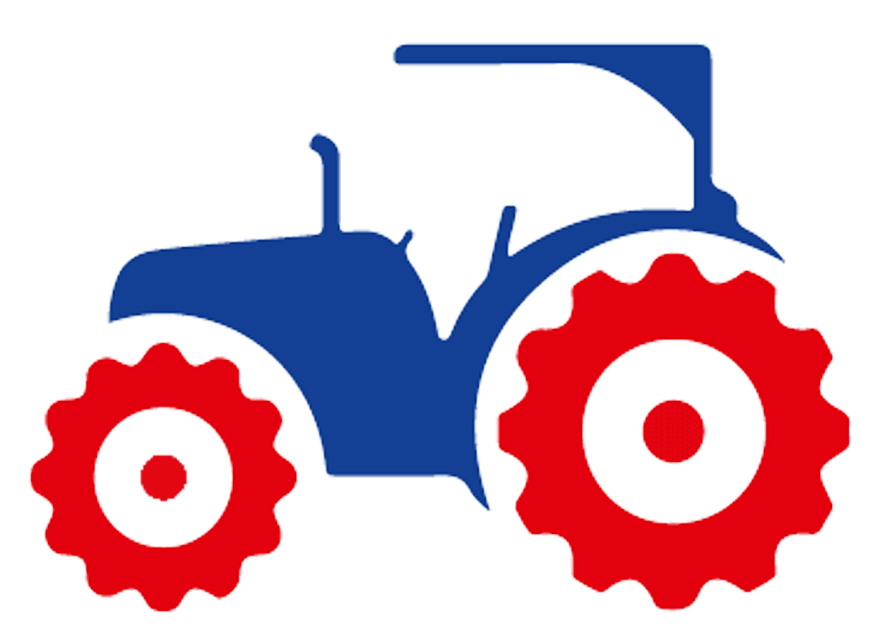
Close


Both 2WD and 4WD tractors are important considerations when farmers and other agricultural professionals are planning to invest in a tractor. Sonalika, a trusted brand in agricultural machinery, provides an exhaustive line of tractors in both varieties, which can be adapted to different farming conditions and needs. Being aware of the difference between them and knowing which of them suits you best can have an effect on your productivity, efficiency, and return on investment. This blog will help you in making that choice.
The 2WD tractor has only rear wheels powered, and the front wheels act as a steer. Such tractors are less complex in performance, have a smaller weight and could work well on dry and relatively smooth surfaces. A 4WD tractor, on the other hand, transmits its power to all four wheels and has a superior pulling capacity and traction, especially when the field is uneven or muddy. The company has well-engineered alternatives available in either category, so as long as you want reliable performance, you will have it with Sonalika.
The type of terrain you work on is a major factor in your decision to choose your tractor. In case you farm on flat, dry, well-maintained farmlands, a Sonalika 2WD tractor will satisfy your requirements. But when you have hilly lands, marshy lands or those lands which have slopes and loose soil, then the increased grip of a Sonalika 4WD tractor comes in very handy. The auxiliary grip assists in avoiding the slippage of the wheels and provides the smooth movement of the vehicle, especially in such important activities as ploughing or hauling.
The 2WD tractor models of Sonalika will be highly valued in the farms that are small in size or medium, with lighter work being performed, such as transportation, spraying, and light tillage. They are also more manoeuvrable, even in more confined farm tracks and orchards. On the other hand, when it comes to bigger farms or operations like deep ploughing, heavy cultivation or implements such as rotavators and front loaders, it provides you with an added advantage since the higher power and torque of the Sonalika 4WD tractor is definitely welcome.
The 2WD Sonalika tractor usually consumes less fuel because it is lighter and its mechanics are not that complex. It is cost-effective in activities that do not need a lot of traction or power. Conversely, a 4WD model, although a little more consumptive, reportedly provides more work with less fuel usage on heavy work. It is able to finish up operations more effectively and with fewer trips, which compensates for the increased fuel consumption over the long term.
The first similarity between 2WD and 4WD tractors is the price of the equipment. The Sonalika 2WD tractors are more economical, hence the preference of customers who intend to purchase them as first-time customers or small farmers. But to those who have to work in harsh conditions or have to fulfil heavy duties, 4WD tractors give higher long-term returns. The cost of upfront purchase might be higher, however, durability and the flexibility of 4WD models that Sonalika offers might result in decreased downtime and expenses on repairs in the future.
There is agricultural equipment, e.g. ploughs, balers, and cultivators, that needs larger traction power and engine power. These implements can be suitably executed on a 4WD Sonalika tractor, and it is a constant product that performs well under load. 2WD tractors, being quite competent, may not find it easy on challenging soil. Therefore, when you are dealing with an occupation where you constantly have to use heavy tools, then purchasing a 4WD version will enhance efficiency and work.
More weight distribution and balanced power enable Sonalika 4WD tractors to drive smoothly, which saves the operator fatigue due to long working hours. This ensures that they work efficiently even under adverse conditions, which means that there are fewer delays and manual work. The 2WD models, due to their weight and simplicity, are also simple to operate, but they may necessitate more passes or adjustments on steep terrain, resulting in more actual strain as compared to 4WD.
The 2WD tractors require a simpler drivetrain, which means they are easier to maintain and cheaper to maintain. The fewer the moving parts, the fewer the chances of mechanical failure. Sonalika provides reliability in every one of its products, including the 2WD and 4WD models, and good after-sales services. The 4WD tractors, however, may necessitate an increased frequency of service, especially on the front axle and transmission systems. Nevertheless, to farmers who require rugged conditions and high performance, this trade-off is usually justified.
Conclusion:-
The decision to use a 2WD or a 4WD Sonalika tractor will be based on the size of the farm, the type of terrain on the farm, application demand, and price. A Sonalika 2WD tractor is efficient and affordable to use on normal, lighter jobs on flat land. When an environment is demanding, large-scale or challenging, the solution is to go with a Sonalika 4WD tractor, which provides unlimited power, performance and versatility. Whichever your preference, with a wide variety of trusted tractors, at Sonalika, we give you the exact best that fits your requirement and leads to greater productivity, lower downtime and drives you through your path of excellence in farming.